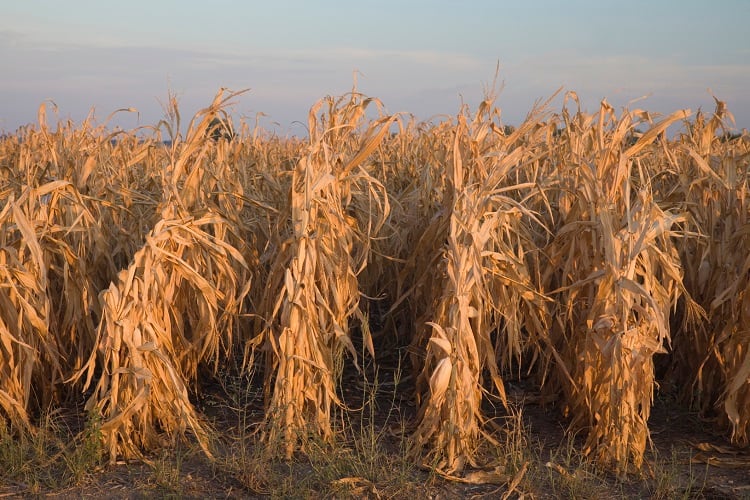The food industry is facing a whole host of challenges, from increasing energy prices to the impact of geopolitical unrest on supply imports, but the greatest challenge is undoubtedly climate change.
And climate change itself is impacting the food industry in multiple ways, one of these being 'heatflation'.
What is heatflation?
Extreme weather events across the globe have been affecting a whole range of crops, including peanuts, cocoa and coffee. While some crop-growing regions have been adversely impacted by the effects of extreme rainfall, other crop-growing regions have been adversely impacted by the effects of extremely high temperatures and drought.
The damage to crops, resulting from extreme-high temperatures and drought, has led to the increase in the price of those crops on the market. This price rise has come to be termed ‘heatflation’. And it’s likely this term will quickly find its way into the common vernacular as climate change increases the frequency of extreme weather events and their impact on the food supply.
According to the World Economic Forum (WEF), heatflation is “a major threat to food security, especially for the most vulnerable people in the world".
How are extreme temperatures and drought impacting food security?
Extreme heat and drought can damage crops in a number of ways.
Extreme heat causes stress to plants, making them more susceptible to pests and diseases. It can also impact the quality of the crops, making the produce less nutritious and more susceptible to spoilage.
Drought causes water stress to plants, which can lead to crop failure. Droughts across much of Europe in 2023 led to a significant drop in crop yields. Figures from the World Economic Forum (WEF) show maize yields fell by 25% and soybean production, used largely for animal feed, fell by 10%.
And some countries fared worse than others, with Italy suffering a 30% fall in wheat and rice yields, following its worst drought for 70 years.
But it’s not just European food producers who are struggling. Countries across the globe have experienced drought and extreme high temperatures that have impacted crops.
FoodNavigator recently reported on the current peanut shortage, caused by changing weather patterns and extreme weather events in the growing regions, which supply the EU. Most of the peanuts supplied to the EU come from Argentina. However, Argentina was affected by drought during the 2022/23 growing season, with environmental analyst firm, Gro Intelligence calling it, “one of the worst droughts in the past two decades". This put significant pressure on farmers who produced lower yields than normal.

How are extreme temperatures and drought impacting food prices?
This strain on global food security is inevitably leading to an increase in food prices, or heatflation, as demand for food continues to rise with the rising global population.
Commodities such as olive oil and sugar have seen a noticeable increase in price, over recent months and years, directly linked to high temperatures and drought conditions in the growing regions.
Speaking on heatflation affecting the cost of olive oil, marketing manager for Italian olive oil brand Filippo Berio, Lisa Mullins, told FoodNavigator, “the increase has been caused by drought conditions, particularly in southern Spain, which is the largest producing country".
This is particularly concerning as some parts of Spain are already reported to be experiencing drought conditions this year, despite it only being spring. This casts doubts on the success of future crops.
Furthermore, a joint report from the UN’s World Meteorological Organization and the European Union’s climate agency, Copernicus, said that Europe is the fastest-warming continent on the planet, with temperatures rising at roughly twice the global average.
Similarly, heatflation on the cost of sugar can also be directly traced back to drought in Europe. The EU is the world’s leading producer of sugar beet, producing approximately 50% of the total amount produced annually, so disruption affects global supply.
Additionally, sugar cane production in major producing countries, such as Brazil, has also been affected by extreme weather conditions pushing prices up. The global cost of sugar has risen to its highest level since 2011, following concerns of underproduction rates from countries such as Thailand, which is facing a severe drought. Similarly, India saw sugar prices jump by more than 3% in two weeks, in September 2023, reaching their highest level in six years. This followed a period of low rainfall in the country's key growing regions and raised serious production concerns, for the upcoming growing season.
What can be done to protect future food security?
As extreme high temperatures and drought continue to negatively impact food production, it is becoming increasingly clear that measures need to be taken to create more resilient food systems and protect future food security. With this in mind, the World Economic Forum (WEF) has detailed a number of ways countries can work to mitigate the effects of, and tackle, heatflation.
- Investing in more resilient agricultural practices, such as drought-resistant crops and irrigation systems.
- Diversifying food production so that we are not reliant on a few staple crops.
- Reducing food waste so that we make the most of the food that we produce.
- Supporting policies that promote food security, such as subsidies for farmers and food banks.


